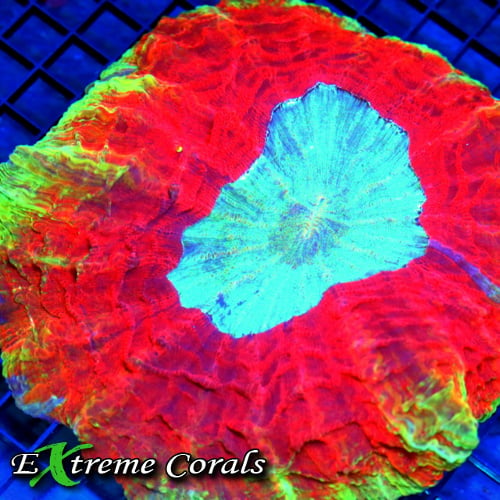Extreme Corals News and Updates
Coral Quarantine 101: How to Protect Your Reef from Pests and Diseases
Protect Your Reef: A Guide to Setting Up a Coral Quarantine Tank and Preventing Pests and Diseases
When adding new corals to your reef tank, it's essential to take precautions against pests and diseases that could devastate your marine ecosystem. Just like in any other biological environment, your reef tank can become vulnerable to harmful hitchhikers—unwanted pests and parasites that can damage your corals or even wipe out an entire tank. One of the best ways to prevent this is by setting up a coral quarantine tank.
by scott Shiles • October 14, 2024
Reef Tank Maintenance, Reef Tank Equipment, All Corals
Why Quarantine Your Corals?
Quarantining new corals before introducing them to your main reef system is an essential practice for protecting the health of your aquarium. It allows you to observe your corals in a controlled environment, treating them for any potential diseases or pests before they can spread to the rest of your tank.
Some common pests and diseases to watch for include:
- Aiptasia Anemones: These fast-reproducing anemones can sting corals, causing tissue damage and slowing growth.
- Montipora-Eating Nudibranchs: These tiny nudibranchs can quickly devastate Montipora corals if left unchecked.
- Red Planaria (Flatworms): They can spread quickly, covering and smothering coral polyps, causing stress and death.
- Zoanthid-Eating Spiders: These pests target zoanthids, leading to die-offs if not addressed immediately.
These pests are often too small to see right away, making it difficult to detect them on new corals. Without quarantining, they can multiply and spread in your tank before you even realize there’s a problem.
How to Set Up a Coral Quarantine Tank
Setting up a quarantine tank for corals is a straightforward process and doesn’t need to be overly complex. Here’s our step-by-step guide on how to do it:
Choose the Right Tank Size
Corals don't need a lot of space in a quarantine setup, so you can use a smaller tank—anywhere from 10 to 20 gallons is usually sufficient. Make sure the tank is easy to monitor and maintain, with good visibility so you can observe your corals closely for any signs of pests or disease.
Lighting and Filtration
Just like in your main reef tank, corals in a quarantine tank will need appropriate lighting to thrive. Use a light system that mimics the same intensity and spectrum that you would use in your main display tank to keep the corals healthy during the quarantine process.
For filtration, a simple hang-on-back (HOB) filter can work effectively, as quarantine tanks don’t typically house fish or other inhabitants that would create much waste. However, it's essential to maintain good water quality by performing regular water changes.
Water Parameters
Maintaining stable water parameters is crucial in a coral quarantine tank, as fluctuating conditions can stress corals and make them more vulnerable to diseases. Keep your parameters as close to your main tank as possible:
- Temperature: 72°F to 78°F
- Salinity: 1.024 to 1.026 specific gravity
- pH: 8.1 to 8.4
- Calcium: 400-450 ppm
- Magnesium: 1200-1350 ppm
Perform regular water tests to ensure these parameters remain stable. Since a quarantine tank is isolated, you’ll need to stay on top of water changes and test frequently.
Observation and Treatment
Corals should be quarantined for at least 2-4 weeks to give you ample time to observe them for any signs of pests or diseases. Here’s what you should look out for during this time:
- White spots, lesions, or discoloration on coral tissue
- Unusual growths or parasites on the surface of the coral
- Lack of polyp extension or signs of stress
- Pests like flatworms, nudibranchs, or algae growth
If any pests or diseases are detected, here are a few common treatments that can help:
- Coral dips: These are specially formulated solutions designed to kill pests without harming the coral itself. Some hobbyists use iodine-based dips like Lugol’s Solution, or proprietary coral dips such as Revive Coral Cleaner.Studies suggest that iodine-based solutions effectively treat bacterial infections and certain parasites, which is why iodine is often used in coral dips .
- Manual removal: For larger pests, you may need to physically remove them from the coral using tweezers or a siphon.
- Quarantine-only medications: Some coral diseases or pests may require specialized treatments. Always follow the manufacturer's instructions when using these, and make sure to research their effect on corals .
Gradual Acclimation to Main Tank
Once your corals have been through the quarantine process and show no signs of pests or disease, it's important to acclimate them slowly to your main tank. Use the drip acclimation method to ensure they adjust to the water chemistry in your main display.
Preventing Coral Diseases: Best Practices
Preventing coral diseases starts with quarantine, but there are additional steps you can take to keep your corals healthy:
- Source Responsibly: Always buy corals from reputable suppliers who prioritize sustainable harvesting and follow proper coral handling protocols. Wild-caught corals are more prone to pests and diseases, so opt for aquacultured corals when possible.
- Regular Water Testing: Keeping an eye on your tank’s water parameters is essential. Stable conditions help prevent stress, which can lead to diseases like coral bleaching or tissue necrosis.
- Maintain Good Flow: Ensure your corals receive proper water flow in the main tank, as stagnant water can lead to bacterial growth and other issues.Safeguard Your Reef with Coral Quarantine
For more detailed scientific insights on coral diseases and the benefits of quarantine, check out studies like those from the Smithsonian Marine Station and the Marine Biology Research Group .

